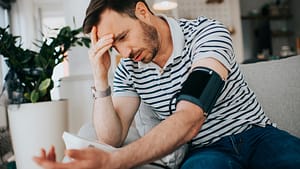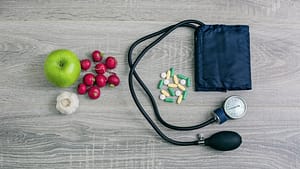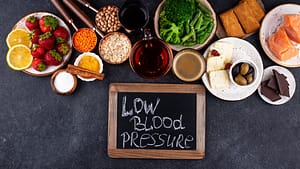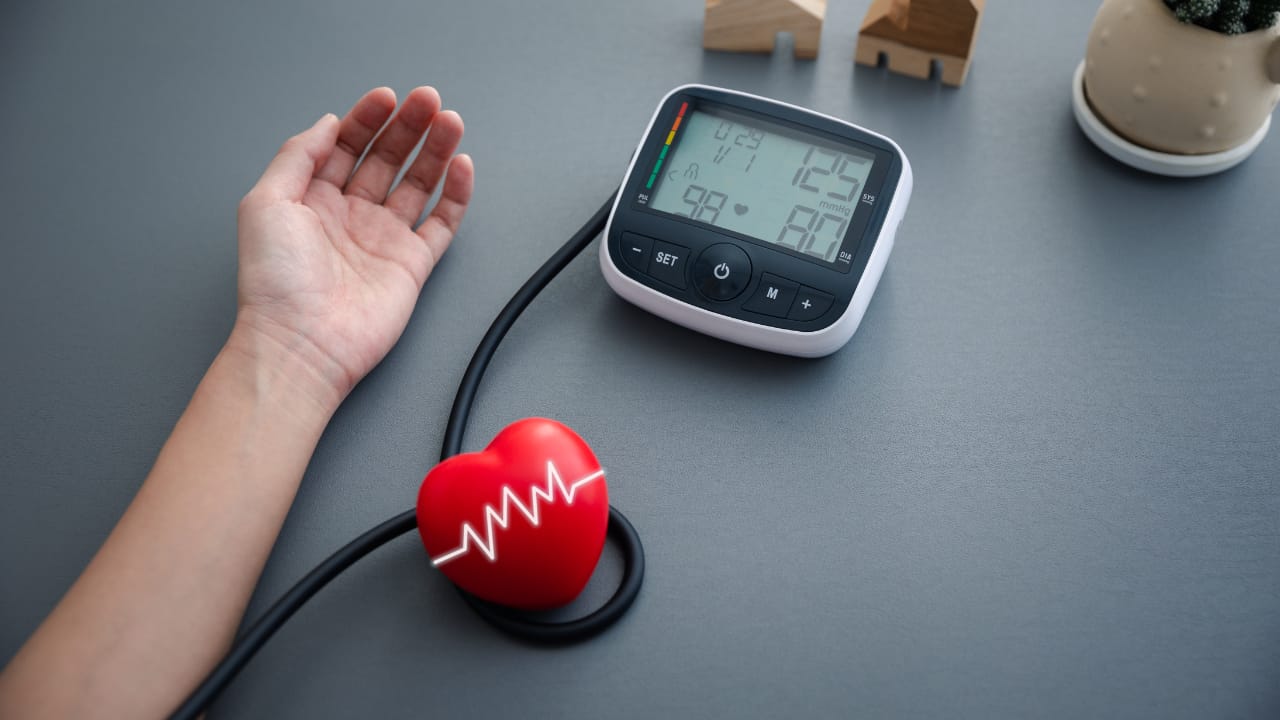
How to Low Blood Pressure Naturally: Effective Home Tips
Knowing how to lower blood pressure naturally is essential for maintaining overall health. In addition to managing high blood pressure, it’s also important to recognize and address low blood pressure, which can cause symptoms like dizziness, fainting, and fatigue. This guide provides practical insights into low blood pressure emergency treatment at home, including foods that can help stabilize blood pressure levels quickly.
Understanding Low Blood Pressure
Low blood pressure, or hypotension, is typically defined as a blood pressure reading below 90/60 mmHg. This condition is less discussed than high blood pressure, yet it can lead to significant symptoms, such as dizziness, nausea, and even shock in severe cases.
What Causes Low Blood Pressure?
Common causes of low blood pressure include dehydration, certain medications, blood loss, and heart or endocrine problems. Nutritional deficiencies and lifestyle factors like stress and overexertion can also contribute.
How to Lower Blood Pressure Naturally When It’s High and Manage Low Blood Pressure Emergencies at Home
One of the best approaches to understanding how to low blood pressure naturally is through simple lifestyle adjustments and careful dietary choices. Staying hydrated is vital, as dehydration can lead to a drop in blood pressure. If a doctor advises, incorporating a slightly higher salt intake and avoiding sudden movements can also help. Beyond these daily strategies, having low blood pressure emergency treatment at-home options is essential. For instance, drinking electrolyte-rich fluids such as coconut water or sports drinks can immediately boost blood pressure during an episode.
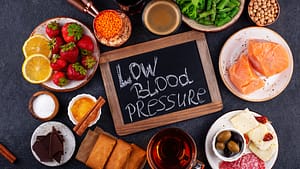
The right foods available can also provide low blood pressure emergency treatment at home food options when needed. Salty foods, like olives or salted nuts, can quickly raise blood pressure levels in an emergency. Additionally, licorice tea or beetroot juice can improve circulation and support healthy blood pressure levels. By integrating these dietary and lifestyle choices, you’re equipped with practical methods to manage and naturally maintain stable blood pressure, ensuring both preventative care and emergency readiness for hypotension.
- Stay Hydrated
- Why it’s critical: Dehydration reduces blood volume, which can cause a sudden drop in blood pressure.
- Quick action: Drink water regularly, especially in hot weather or after exercise, to avoid low blood pressure emergencies at home.
- Increase Salt Intake (with Caution)
- Why it’s helpful: Salt can help raise blood pressure by retaining fluids, a helpful tip for people prone to low blood pressure.
- How to adjust: Try adding a pinch of salt to foods like soups, but consult a healthcare provider if you manage other health conditions.
- Emergency Treatment for Low Blood Pressure at Home with Food
- Why it works: Certain foods like salty snacks can provide immediate relief during a low blood pressure episode.
- Suggested foods: Consuming a small amount of salty broth, olives, or salted nuts can quickly raise blood pressure in a pinch.
- Wear Compression Stockings
- Why it helps: Compression stockings can improve circulation by reducing blood pooling in the legs, helping to prevent dizziness and fainting.
Emergency Measures for Low Blood Pressure at Home
Quick measures can help stabilize blood pressure in a low blood pressure emergency. Knowing these steps can also help prevent symptoms from escalating.
- Lie Down and Elevate Your Legs
- How it helps: Lying flat with legs elevated above the heart encourages blood flow to the brain and vital organs, alleviating symptoms quickly.
- Drink Electrolyte-Rich Fluids
- Why it’s effective: Electrolytes support blood pressure by maintaining fluid balance.
- What to drink: Coconut water, sports drinks, or oral rehydration solutions are ideal for restoring electrolyte levels during a sudden drop in blood pressure.
- Avoid Rapid Position Changes
- Why it’s essential: Quickly standing up from a seated or lying position can trigger dizziness. Instead, move slowly to help your body adjust.
Dietary Suggestions for Managing Low Blood Pressure
Diet can be essential in managing low blood pressure, especially in emergency treatments for low blood pressure at home. Here are foods that can help stabilize blood pressure naturally:
- Increase Fluid and Salt Intake with Foods
- Helpful foods: Soups, broths, and naturally hydrating fruits and vegetables like watermelon, cucumber, and celery can contribute to fluid intake and help prevent low blood pressure emergencies.
- Consume Small, Low-Carb Meals
- Why it matters: Large, carb-heavy meals can cause a post-meal drop in blood pressure. Eating smaller, more frequent meals stabilizes blood pressure levels throughout the day.
- Limit Alcohol and Caffeine
- Why to avoid: Both alcohol and caffeine can lead to dehydration, potentially causing a drop in blood pressure.
Foods to Use as Low Blood Pressure Emergency Treatment at Home
- Licorice Tea
- Licorice contains compounds that can temporarily raise blood pressure and improve circulation. Steep dried licorice root in hot water for 10 minutes, strain, and sip slowly.
- Ginger Tea
- Ginger supports healthy circulation and can be a helpful addition to meals for those managing low blood pressure.
- Beetroot Juice
- Beetroot’s nitrates can stimulate blood flow and help maintain stable blood pressure. Enjoy half a cup daily, but start slowly to monitor your body’s response.
- Pumpkin Seeds
- Pumpkin seeds are rich in magnesium and zinc, essential minerals that promote cardiovascular health and stable blood pressure.
When to See a Doctor
If low blood pressure persists or causes severe symptoms, consult a healthcare provider for guidance. Managing low blood pressure naturally can be effective for daily symptoms, but professional help may be necessary for long-term solutions or underlying health conditions.
Conclusion
This guide provides critical steps to naturally lower blood pressure, focusing on low blood pressure emergency treatments at home and using foods for low blood pressure emergencies. Maintaining a well-balanced lifestyle, staying hydrated, and knowing emergency tips for home treatment empower you to manage blood pressure and maintain well-being. Consult a healthcare provider for personalized support, especially if symptoms persist or intensify.
Managing blood pressure naturally is a practical and effective approach involving minor adjustments in daily habits and diet. Focusing on hydration, nutrient-rich foods, and moderate physical activity can play a crucial role for those looking to stabilize blood pressure naturally. Additionally, keeping stress levels low and avoiding processed foods can support your journey to controlling blood pressure naturally, promoting overall well-being and energy.
